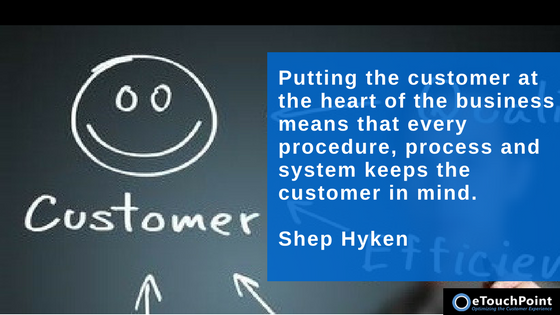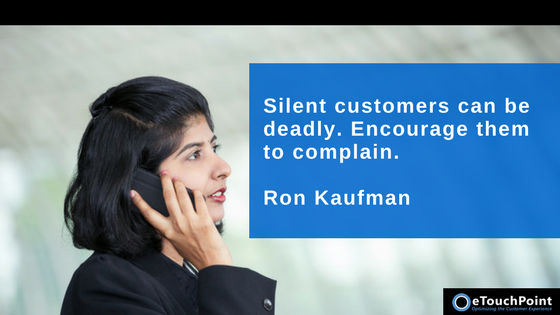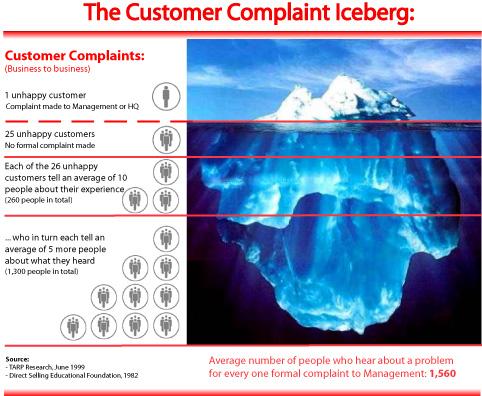
When done well, a mature Customer Experience (CX) program touches every corner of an organization. Companies less far along the CX path can find it challenging to contemplate that potential future. By selecting targeted, but small CX actions companies can achieve solid results—and the momentum to keep moving forward.
In fact, most companies will find greater success when they view CX as a series of incremental steps instead of a complex, cross-cutting program.
As Deloitte describes, an intense focus on larger initiatives can get in the way of tangible CX achievements:
In theory, a large-scale omnichannel CX overhaul makes sense but, in practice, it can lead some companies to disappointing results because it takes time, money, and attention away from the customers. Fortunately, these companies don’t have to scrap the initiatives in which they’ve invested. Instead, they can support the aspirational objectives of their omnichannel efforts using a modified approach.
Read on to learn about five small CX actions that can take your CX program to the next level.
1. Centralize Ownership and Define a CX Vision
CX programs may flounder if the company has not created a clear CX vision and charged an executive with CX oversight.
When centralized CX ownership is absent, individual customer-facing units may take on CX management themselves—without any coordination with other frontline groups’ practices. Inconsistent processes, duplicate systems, and fractured customer experiences can result.

Articulating a vision provides a sense of direction for service organizations. A solid vision proclaims who the organization wants to be in the eyes of its customers and ties service professionals’ day-to-day work into a larger purpose. It also helps managers make decisions that support the company’s broader aims.
The company’s CX leader owns the vision—and champions CX throughout the organization. That leader becomes the point person for critical customer decisions and guides different departments in a common direction.
And centralizing CX ownership and articulating a vision doesn’t mean the company needs to commit to a far-reaching program out of the gate. When companies want to start small and prove the CX value proposition, the program’s vision and goals can be set and then tested in a roll-out with one service channel. The results from this test case can then be used to refine the CX strategy as it is extended to additional channels.
2. Establish a Consistent Approach to CX Metrics
To move toward a more unified and mature CX practice, companies need a consistent way to evaluate every frontline organization. They need to ensure that any surveys sent out to customers have at least one—to a select set—of CX questions in common. That way, companies can collect and compare insights to understand performance of each frontline team—against their own benchmarks and relative to other customer-facing groups.
For companies with some CX infrastructure in place—but disparate practices across their service groups—this step can help foster consistency. Often, implementing proven, industry-standard metrics – like CSAT or Customer Effort Score- can provide the most straightforward path to this goal.
3. Implement a More Dynamic Survey Practice
Historically, companies have relied on large-scale surveys at periodic intervals to measure customer satisfaction. While these relationship surveys have a place in every CX program, collecting feedback after every interaction is much more dynamic and meaningful.
At eTouchPoint, one of our utility clients moved from mailing a paper-based survey to customers to an automated post-interaction survey approach. The impact was quick and dramatic.
Within a few months after implementation, the utility shifted from gathering feedback once-per-year to soliciting insight within one to three days after each customer interaction. Once completed by customers, survey results are available in near-real-time to CX stakeholders.
The company is now able to evaluate performance of its different frontline teams—including call center and field service personnel. And the company has opportunities to make changes to their CX efforts based on genuine customer feedback.
4. Reach Out to Unhappy Customers
Dealing with complaining customers can feel like a burden. It is easy and human to want to avoid unhappy customers—but a shift in mindset reveals that customers who speak up about disappointing experiences can provide important insights.

A popular CX concept called the “Customer Complaint Iceberg” portrays a customer that complains as the tip of an iceberg—an indicator of unseen danger.
The model suggests for every one customer who complains, 25 customers remain silent. And those 25 non-complainers can do significant damage to the brand by spreading negative sentiment about the brand by word-of-mouth or online.
Ultimately, according to the iceberg theory, an estimated 1,500+ people can hear about a problem for every one complaint that surfaces to a company.

Image Source: Adrian Swinscoe
With that in mind, a complaining customer shouldn’t feel like a burden, but rather an opportunity to turn around the opinion of one person—or possibly many.
Advanced CX platforms can make it easier for companies to manage customer complaints. After a customer leaves a negative survey score, frontline managers can receive alerts that prompt them to investigate issues and reach out to customers.
At first, frontline managers may resist and find it burdensome to take on new tasks. In those situations, we recommend setting small alert resolution goals to start. For example, a manager can have a target of responding to 25% of alerts per week—or even 10% per week if his or her team is large. As that level of customer contact becomes manageable, the manager can expand the scope.
Some of our most CX-savvy clients who have instituted advanced alert and follow-up practices have made outreach to unhappy customers part of their culture. In fact, one Fortune 100 company aims to reach out to 95% of customers who complain in less than 24 hours.
5. Say “Thank You” to Deserving Employees
Once companies start to collect post-interaction feedback more systematically, they typically find significant positive sentiment from customers. Sharing this customer praise with employees can dramatically boost their morale—and motivate them to higher levels of performance.
We have seen many creative recognition approaches—from executive thank you notes to team and individual rewards to mentions in internal communications. All of these have merit, but some can take time to institute. A simple “thank you” from a manager can brighten any employee’s day and inspire him or her to seek out more good feedback from customers.
Small CX Actions Make Big Differences
Adopting a mindset of specific, manageable steps and incremental change helps organizations achieve CX wins. As Deloitte explains, customers simply want to feel good about their experiences and don’t care about the complexity involved to achieve that end:
When was the last time you heard a customer say, “I wish this experience were seamlessly connected across all of my favorite retail channels” or “I would love an integrated communication platform with a common message across all of my touch points”? The answer is likely never because customers don’t think about channels or platforms or touch points.
Wherever your organization is on the CX path, you can keep moving forward. Some steps take time, buy-in, and budget, but other small CX actions can ensure your program continues to evolve and meet customer needs.
***
A version of this post previously appeared on the eTouchPoint blog.
Header background image courtesy of Pixabay.



